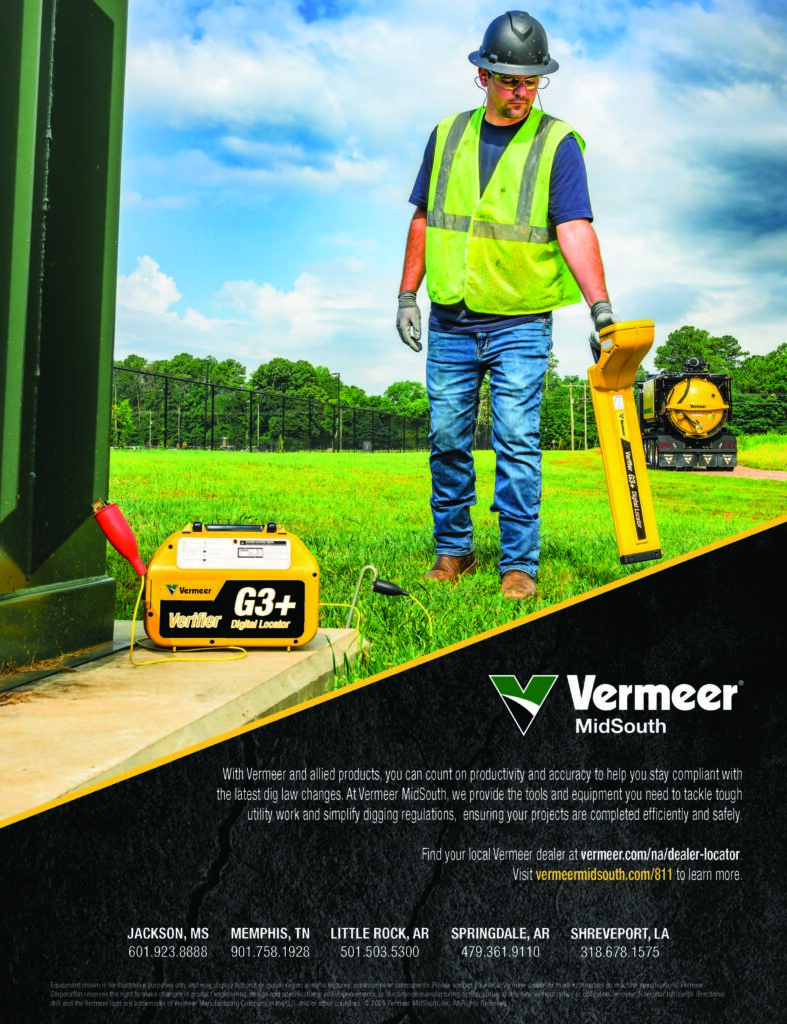
Since 2017, we’ve been publishing in 811 magazines in Tennessee, Mississippi, Arkansas, and Louisiana to reach the utility operators and excavating community in our states.
As Vermeer MidSouth continues to equip our customers to dig and drill safely, we partner with ACTS to be the drivers of the damage prevention industry so people live and work in a safety environment.
What is 811?
811 is the national call-before-you-dig phone number. Anyone who plans to dig should call 811 or go to their state 811 center’s website before digging to request that the approximate location of buried utilities be marked with paint or flags so that you don’t unintentionally dig into an underground utility line.
What info do I need before calling 811?
You will need to know the address of where you plan to dig, including the county and nearest cross street, as well as the type of project you’re completing and the exact area on the property where you’re planning to dig. Whether you call 811 or make your request online, you’ll need the same info.
After I call 811, what do I do?
You need to wait a few days to allow utilities to respond to your request and ensure that all utilities have indeed responded to your request before breaking ground. Once all utilities have marked their buried lines, you should dig carefully around any utility marks and consider relocating projects that are close to buried utilities.
The above information is sourced from https://call811.com/.
Consider Vacuum Excavation to Dig
When it’s time to break ground on your next utility or underground project, what machine or tools are you planning to bring to the job? A vacuum excavator should be at the top of that list, ahead of compact excavators, shovels, augers and post-hole diggers.
Here’s why:
- Safety: Water, gas, electrical, sewer, fiberoptics and coax cable — there is a ton of buried infrastructure just a few feet below ground level. Vacuum excavators employ soft digging methods to help mitigate the risk of damaging underground infrastructure. However, vacuum excavation does not override the need to call 811 before digging begins.
- Quick and efficient: Digging by hand is labor intensive, and loading and then hauling a compact excavator or backhoe to a site is time consuming and challenging to set up. Truck-and-trailer vacuum excavators are quick to deploy and don’t require the same manual labor as digging with a shovel. Plus, with proper setup, you can even dig in frozen ground conditions — which is no easy task with traditional digging methods.
- Clean jobsite: A lot of utility work happens in that narrow stretch of land between the sidewalk and curb. When you dig with a compact excavator or a shovel, you have to dig wide to dig deep. Dirt piles up next to the hole, which is not an ideal situation for businesses, homeowners or drivers.
With vacuum excavators, you can dig straight down. Hole diameters are kept to a minimum, and excavated material gets hauled away in the vac. Also, your remediation efforts are minor compared to what they would be with traditional digging methods. - Regulated: Depending on where you’re digging, some utility companies and municipalities will only allow soft-digging methods, like vacuum excavation, when working near existing underground infrastructure.
Efficient and productive, built with safety in mind, vacuum excavation can be a better way to dig in many environments. So be sure to consider all of your digging options before you start your next project, and print or share this handy infographic to remind your co-workers and friends about all the benefits of using soft-digging methods.